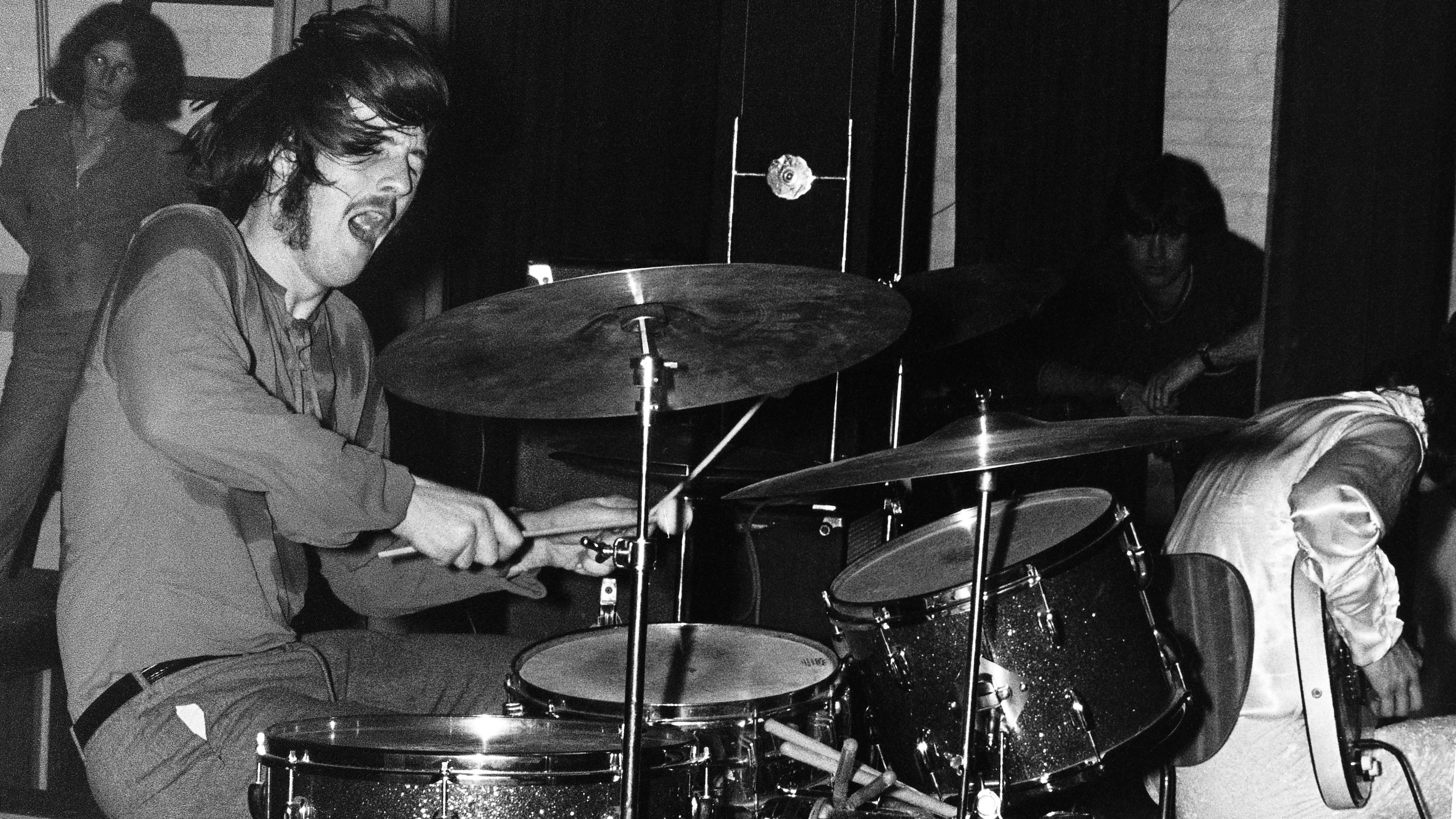Ginger Baker, the reluctant rock god
He may not have admitted it (or anything else), but Ginger was at the forefront of rock conquering the world
The heavy metal thing, giving birth to that, we should have aborted it. We should have aborted that kid. I hate heavy metal
Ginger Baker
Of all the biggest British drum legends, Ginger Baker would probably be the least happy to be talked about as a pioneer of any sort of rock drumming.
“The heavy metal thing,” Baker told Rhythm in 2012, “giving birth to that, we should have aborted it. We should have aborted that kid. I hate heavy metal.”
Nevertheless, what Baker brought to the rock genre with the lauded trio Cream cannot be understated. A jazz player, mentored by the great British jazz player Phil Seamen, Baker went on to explore African rhythms, and his playing was so far beyond the scope of what was considered rock that - intentionally or otherwise - he changed rock playing for the better, forever.

When British rock drumming ruled the world: it was 50 years ago today...
Ginger first came to prominence playing R&B with Alexis Korner’s Blues Incorporated and the Graham Bond Organisation, but it was with Jack Bruce and Eric Clapton (alongside Baker, considered the ‘cream’ of musicians at the time) that he experienced his greatest success and popular acclaim.
In 1968, Cream released their third and final album Wheels Of Fire. Baker and Clapton went on to form Blind Faith, then Ginger turned his talents to a huge range of projects. His abiding love for jazz and African drumming led Ginger to record with Afro-beat king Fela Kuti and fusion guitarist Bill Frisell, and in 1993 Ginger was inducted into the Rock’n’Roll Hall Of Fame with Cream, the trio reforming for live dates in 2005.
‘Sunshine Of Your Love’, from 1967’s Disraeli Gears, is one of Cream’s most popular hits and is a perfect example of Ginger Baker’s unique drumming with its tribal verse groove and ‘backwards’ feel, as well as the wide-ranging fill ideas.
Ginger’s sparing use of crashes helps emphasise the tribal pattern while his snare on ‘1’ and ‘3’ gives a heavy downbeat and creates an interesting reversed feel. During the chorus, repeating two-bar phrases leave Ginger plenty of space to show his ideas and feature a mixture of subdivisions, flams and double-stops.
Want all the hottest music and gear news, reviews, deals, features and more, direct to your inbox? Sign up here.
When the band jam over the same chord at the end, he incorporates some of his signature double bass-drum work.
Inventing the rock solo
One of Baker’s most famous moments behind the kit was his ‘Toad’ solo. Until then, ‘pop’ solos by the likes of Sandy Nelson, the Surfaris’ Ron Wilson and the Shadows’ drummers were still heavily influenced by the jungle toms of Krupa, or Joe Morello’s ‘Take Five’.
Baker’s soloing here employed double bass drums and R-L-F-F type patterns inspired by Duke Ellington drummer Sam Woodyard, and have become the staple of rock solos ever since. Ginger was also more than capable of reining it in when necessary, and ‘Badge’ has minimal fills or even crashes.
The big release there is the drum break before the bridge, which can be difficult to feel in the right place (listen for the guitar part starting on ‘3’ with the drum fill starting on the downbeat of the fourth bar after that).
On ‘The White Room’ from 1968’s Wheels Of Fire Ginger’s classic 5/4 bolero-type tom pattern is a repeating hook that the band follows, while during the guitar solo Ginger lets rip with some beautifully musical fill ideas.
His approach to blues classic ‘Born Under A Bad Sign’ is unique; its normally steady eighth-note feel and ‘2’ and ‘4’ backbeat dismissed in favour of something more syncopated.
The eighth-note pattern in the right hand is here played on the ride, complemented by the left foot stepping upbeat eighth-notes while the kick and snare play a unique pattern implying a double-time feel at the end of the bar as the snare falls on the upbeat of ‘3’ and ‘4’.
From 1966 and throughout Cream, Ginger played a Sparkling Silver Pearl American-made Ludwig double bass-drum kit, a special order with unusual sizes. The kicks had 11" deep shells, not the usual 14": 22"x11" (l), 20"x11" (r), 12"x8", 13"x9" (Rogers Swiv-O-Matic mounts), 14"x14", 16"x16". He specifically wanted a different tonality from each of his bass drums.
Front heads were intact and he played Ludwig Fleetfoot kick pedals, with leather drive straps, rather than the metal-link Speedkings used by most Ludwig players. He played and recorded with several snares, including a 1940s 14"x6½" wood shell Leedy Broadway and 14"x5" metal Ludwig Super-Sensitive with parallel-action snares.
Heads were Ludwig Weathermasters, single-ply, white coated Mylar and he tuned his toms to the band: “When they tuned up, so would I.” His trademark tom sound comes from the careful, deep tuning and the way he set his toms flat and played rim-shots off them to cut through. Ginger used Zildjian cymbals. His main ride was a 22" with rivets that he positioned high, angled towards him.
Always looking for multiple tonalities he double-tiered his cymbals - a lower cymbal placed on the section join below the top section so he could mount four cymbals on his two right stands and two on his single left stand.
He had a lower 20" ride, 13", 14", 16", 17" and 18" crashes, 8” splash and cowbell. Ginger’s unique flair, fiery temperament and jazz leanings make him one of the most inspirational rock drummers.
Perhaps his best qualities though come from the fact that he’s a great accompanist, in the jazz tradition. “I play depending on what the people I’m playing with play,” he told Rhythm.
“You listen - that’s what a drummer does. It’s the drummer’s job to make the other guys sound good. Baby Dodds said that. You listen to the other guys and you complement what they’re playing. That can lift them up.”

Geoff Nicholls is a musician, journalist, author and lecturer based in London. He co-wrote, co-presented and played drums on both series of ‘Rockschool’ for BBC2 in the 1980s. Before that he was a member of original bands signed by Decca, RCA, EMI and more. ‘Rockschool’ led to a parallel career writing articles for many publications, from the Guardian to Mojo, but most notably Rhythm magazine, for which he was the longest serving and most diverse contributor.